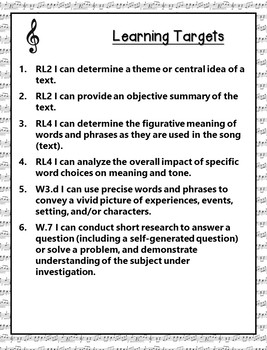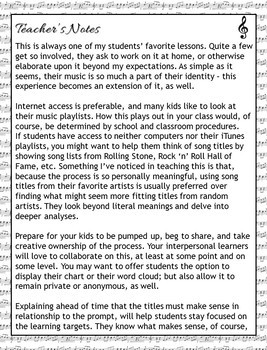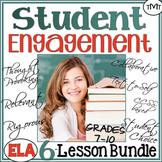Song Titles | Main Idea and Symbolism | Language Arts Worksheets
- Zip
- Internet Activities
What educators are saying
Also included in
- Rigorous, standards-based lessons your students will love! ❤ ❤️ Preview this Student Engagement Bundle for junior high and secondary English Language Arts. So, one day I was thinking about my shop from my customers' perspective. It occurred to me that a buyer might want to know which products wePrice $14.99Original Price $20.75Save $5.76
Description
Songs and song lyrics are so important to teens, and this is one of my students' favorite lessons all year. Teenagers - actual teenagers - have complimented me on this lesson plan. That was a wow-factor for me, because I really didn't expect quite that much love when I developed the lesson. Every time I teach it, I hear comments such as: "We should do this kind of thing more often," "Of all your classes, this one is my favorite so far," etc. Quite a few get so involved, they ask to work on it at home, or otherwise elaborate upon it beyond my expectations. As simple as it seems, their music is so much a part of their identity – this experience becomes an extension of it, as well.
So - prepare for your Middle School and High School Language Arts kids to be pumped up, beg to share, and take creative ownership of the process. This lesson includes prompts to inspire your kids to think of song titles, text to self connections, cards for gallery walk, short answer prompt, super-short narrative writing activity, rubric, and bonus writing paper.
Internet access is preferable, and many kids like to look at their music playlists. How this plays out in your class would, of course, be determined by school and classroom procedures.
Learning Targets:
RL2 I can determine a theme or central idea of a text.
RL2 I can provide an objective summary of the text.
RL4 I can determine the figurative meaning of words and phrases as they are used in the song (text).
RL4 I can analyze the overall impact of specific word choices on meaning and tone.
W3.d I can use precise words and phrases to convey a vivid picture of experiences, events, setting, and/or characters.
W.7 I can conduct short research to answer a question (including a self-generated question) or solve a problem, and demonstrate understanding of the subject under investigation.
I hope you and your students enjoy this as much as we do!
*********************************************************************
*********************************************************************
More Products for You and Your Students to Love:
Lessons with Song Lyrics
1. Coldplay's "Violet Hill" Song Lyric Analysis Lesson
Poetry
1. Poetry Unit Test - Summative Assessment with Passages
2. Emily Dickinson's "Because I Could Not Stop for Death" Close Reading
3. E.E. Cummings Poem "maggie and milly and molly and may
Secondary English, Junior High ELA, Text-to-self, Creative Writing, Song Lyrics, Music.






